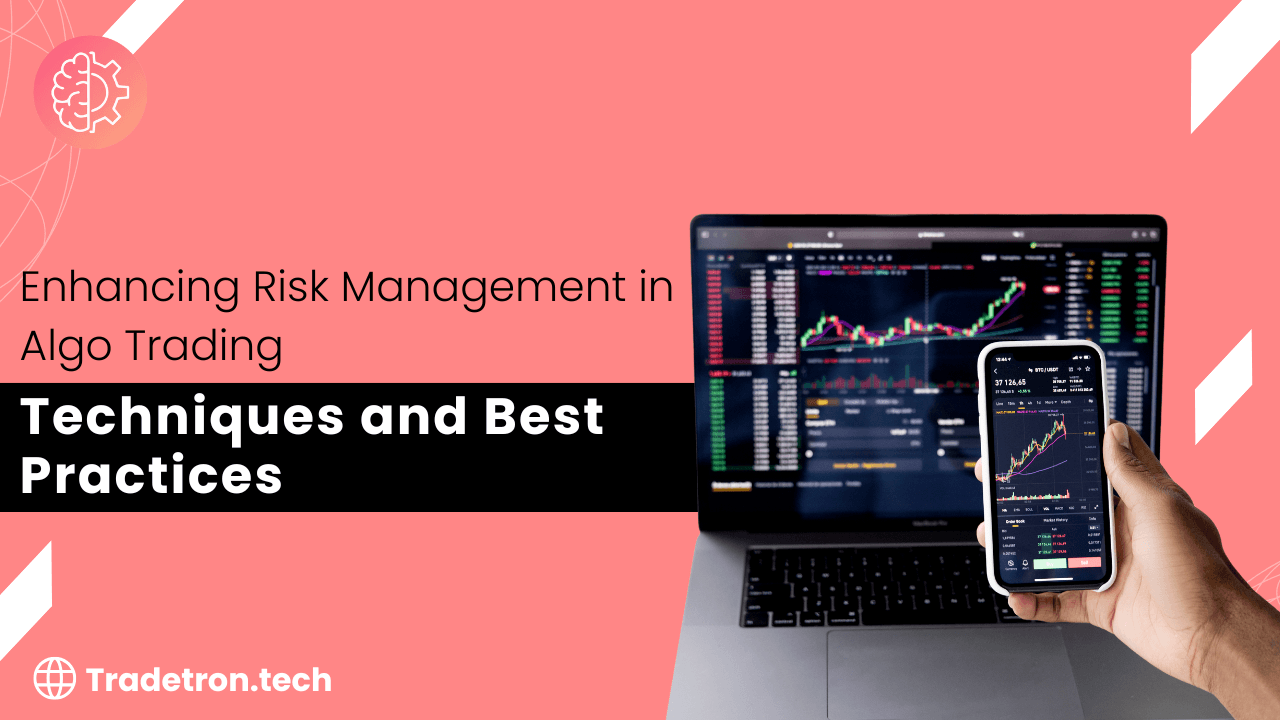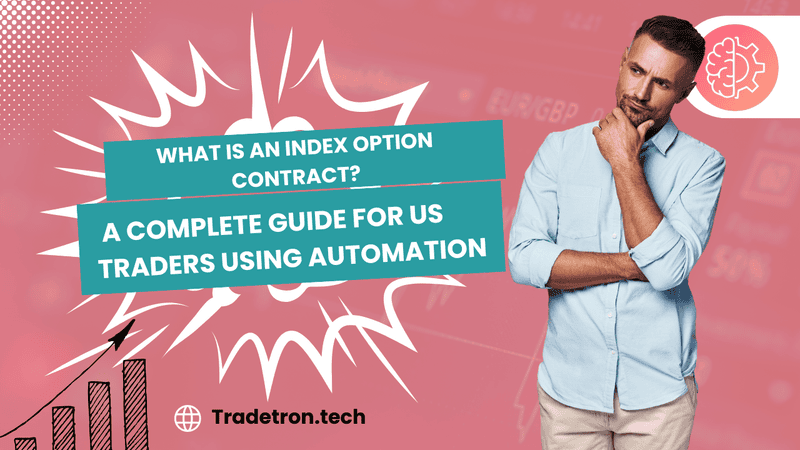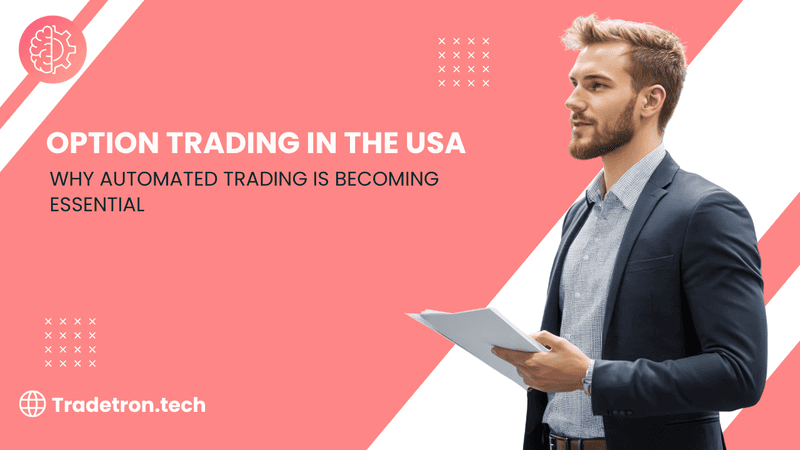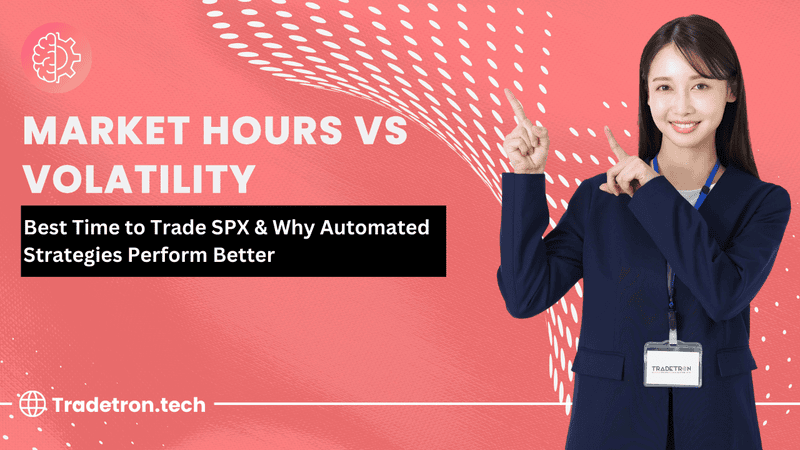In the fast-paced world of algorithmic trading, success isn't just about generating profits – it's about preserving capital and managing risk effectively. While algo trading offers unprecedented speed and precision, it also introduces unique risks that can devastate portfolios in milliseconds. This is where robust risk management becomes not just important, but absolutely critical for long-term success.

Tradetron's advanced algorithmic trading platform recognizes this fundamental truth, embedding sophisticated risk management tools directly into its trading infrastructure to help traders navigate volatile markets with confidence.
The Critical Role of Risk Management in Algorithmic Trading
Risk management in algo trading goes far beyond traditional stop-losses. Algorithmic strategies can execute hundreds of trades per day across multiple assets, creating complex risk exposures that evolve constantly. Without proper risk controls, a profitable strategy can quickly turn into a capital destroyer during unexpected market events.
Modern algo traders face several categories of risk: market risk from price movements, execution risk from slippage and latency, model risk from flawed algorithms, and operational risk from technical failures. Each requires specific management techniques and continuous monitoring.
Tradetron's Comprehensive Risk Management Framework
Tradetron addresses these challenges through a multi-layered approach that integrates risk management into every aspect of the trading process:
1. Pre-Trade Risk Controls
Before any algorithm goes live, Tradetron's platform implements comprehensive pre-trade checks. These include position size limits, maximum exposure thresholds, and correlation analysis to prevent overconcentration in similar assets. The platform automatically validates that proposed trades won't exceed predefined risk parameters, blocking potentially dangerous positions before they're executed.
2. Dynamic Position Sizing
One of Tradetron's standout features is its intelligent position sizing capabilities. Rather than using fixed position sizes, the platform can dynamically adjust trade sizes based on current volatility, account equity, and strategy performance. This adaptive approach helps maintain consistent risk levels even as market conditions change dramatically.
3. Real-Time Risk Monitoring
Once strategies are deployed, Tradetron provides continuous risk monitoring across all active positions. The platform tracks value-at-risk (VaR), maximum drawdown, and other critical metrics in real-time, alerting traders when risk thresholds are approached or breached. This constant vigilance helps prevent small problems from becoming portfolio disasters.
4. Automated Stop-Loss and Take-Profit Mechanisms
While basic stop-losses are table stakes, Tradetron goes further with sophisticated exit strategies. The platform supports trailing stops, time-based exits, volatility-adjusted stops, and complex multi-condition exit rules. These automated mechanisms ensure that risk management decisions are executed consistently without emotional interference.
5. Portfolio-Level Risk Management
Individual trade risk is just one piece of the puzzle. Tradetron's portfolio-level risk management tools help traders understand and control aggregate exposures across all strategies and positions. This includes correlation monitoring, sector concentration limits, and overall portfolio volatility tracking.
Advanced Risk Management Techniques on Tradetron
Volatility-Based Risk Scaling
Tradetron enables traders to implement volatility-based risk scaling, automatically reducing position sizes during high volatility periods and increasing them when markets are calm. This technique helps maintain consistent risk-adjusted returns across different market regimes.
Maximum Adverse Excursion (MAE) Analysis
The platform's backtesting capabilities include MAE analysis, helping traders understand the typical intra-trade drawdowns of their strategies. This insight allows for more realistic stop-loss placement and better risk budgeting.
Time-Based Risk Controls
Tradetron supports sophisticated time-based risk controls, such as reducing position sizes during volatile market hours or completely shutting down strategies during high-impact news events. These temporal controls add another layer of protection against unforeseen market movements.
Multi-Asset Risk Hedging
For traders running strategies across multiple assets, Tradetron facilitates the implementation of hedging strategies that can automatically adjust based on portfolio risk levels. This might include dynamic hedging with index options or pairs trading to reduce overall portfolio volatility.
Best Practices for Risk Management in Algo Trading
Successful risk management on Tradetron involves several key principles:
Always define maximum acceptable losses before deploying any strategy. The platform's risk parameter settings should reflect these limits and automatically enforce them without exception.
Diversification remains crucial even in algo trading. Tradetron's portfolio management tools help ensure that no single strategy, asset, or market condition can disproportionately impact overall performance.
Regular strategy review and risk parameter adjustment are essential. Market conditions evolve, and risk management approaches must adapt accordingly. Tradetron's comprehensive reporting and analytics make this ongoing optimization process manageable and data-driven.
The Tradetron Advantage in Risk Management
What sets Tradetron apart is its integration of risk management into the core trading experience rather than treating it as an afterthought. The platform's risk tools are designed to be proactive rather than reactive, helping traders avoid dangerous situations rather than just responding to them.
Additionally, Tradetron's community-driven approach means that risk management best practices are continuously shared and refined among users, creating a collaborative environment for improving risk management techniques.
Frequently Asked Questions
1. How does Tradetron protect against flash crashes and extreme market events?
Tradetron includes circuit breaker mechanisms that can automatically halt trading when volatility exceeds predefined thresholds. The platform also supports gap risk protection and can implement emergency liquidation procedures during extreme market conditions, helping protect portfolios from catastrophic losses.
2. Can Tradetron automatically adjust risk parameters based on strategy performance?
Yes, Tradetron's adaptive risk management features can automatically modify position sizes, stop-loss levels, and exposure limits based on real-time strategy performance metrics. This dynamic adjustment helps maintain optimal risk levels as strategies perform better or worse than expected.
3. How does Tradetron handle risk management across multiple correlated strategies?
The platform provides comprehensive correlation analysis and portfolio-level risk monitoring that tracks aggregate exposures across all strategies. Tradetron can automatically reduce position sizes or shut down correlated strategies when overall portfolio risk exceeds acceptable levels.
4. Does Tradetron support custom risk metrics and alerts?
Absolutely. Tradetron allows traders to define custom risk metrics, create personalized alert systems, and implement unique risk management rules specific to their trading approach. The platform's flexibility ensures that risk management can be tailored to individual needs and preferences.
5. How does Tradetron help prevent over-optimization and curve fitting in risk management?
Tradetron's robust backtesting environment includes out-of-sample testing capabilities and walk-forward analysis to help identify overfitted risk parameters. The platform also provides Monte Carlo simulation tools that test risk management rules across various market scenarios, ensuring robustness across different conditions.
Effective risk management in algorithmic trading requires sophisticated tools, continuous monitoring, and adaptive strategies. Tradetron provides all these elements in an integrated platform that makes professional-grade risk management accessible to traders at every level, turning risk management from a burden into a competitive advantage.



 Made with Superblog
Made with Superblog